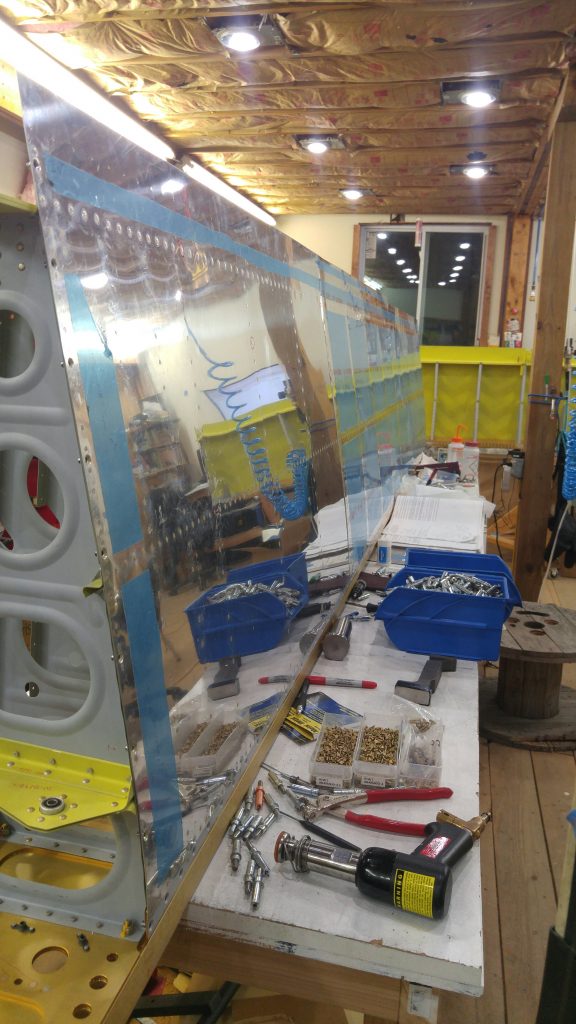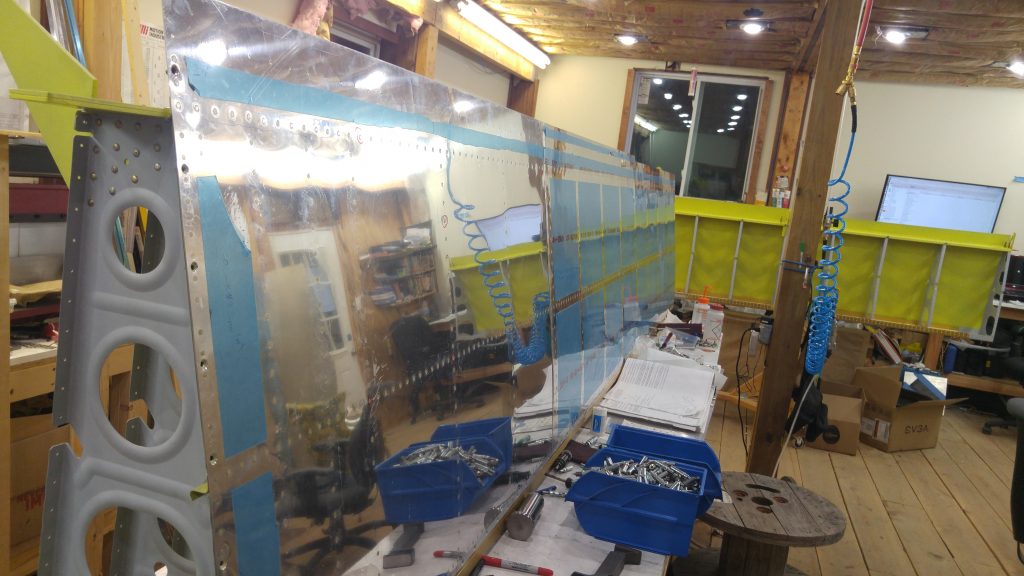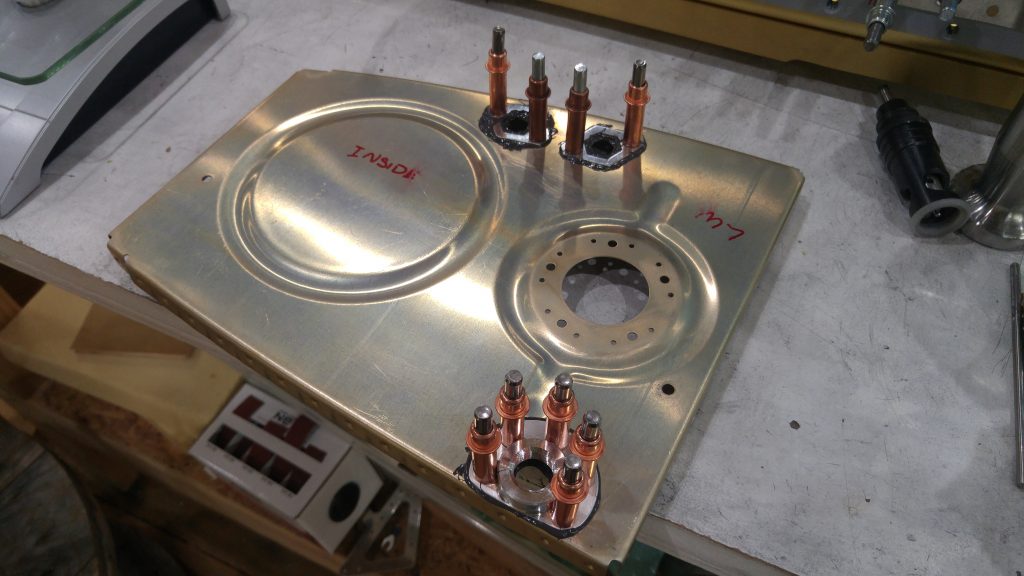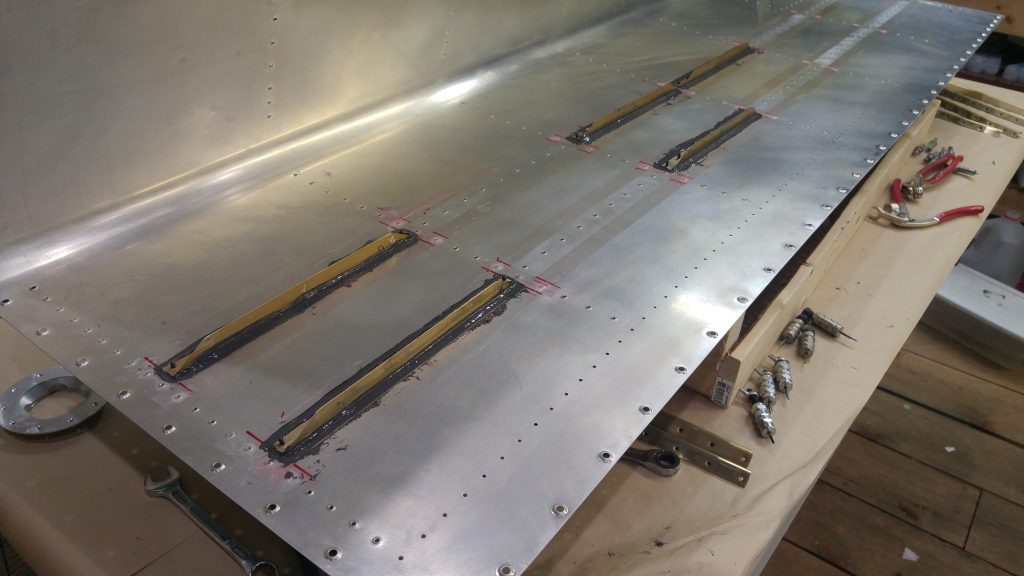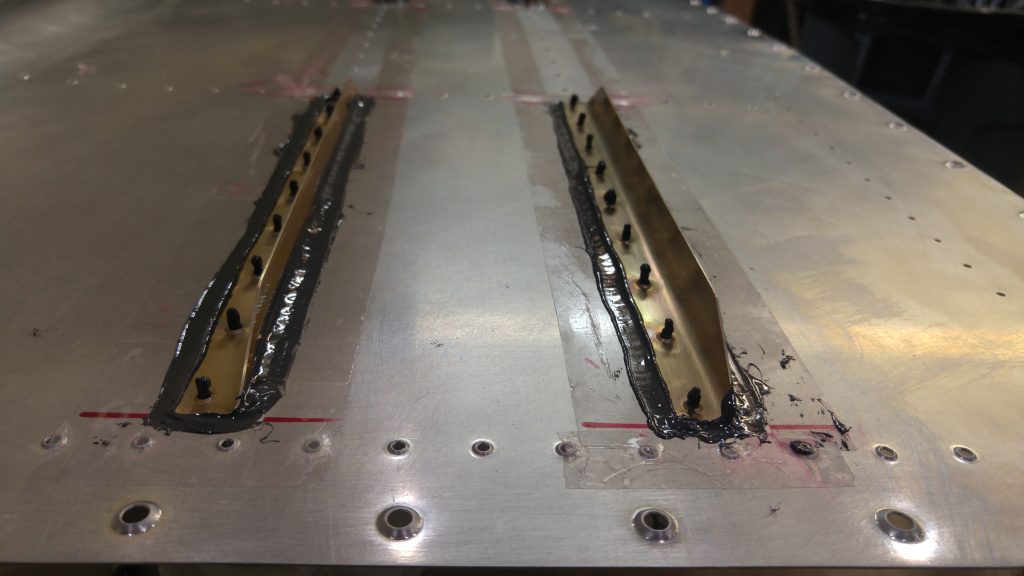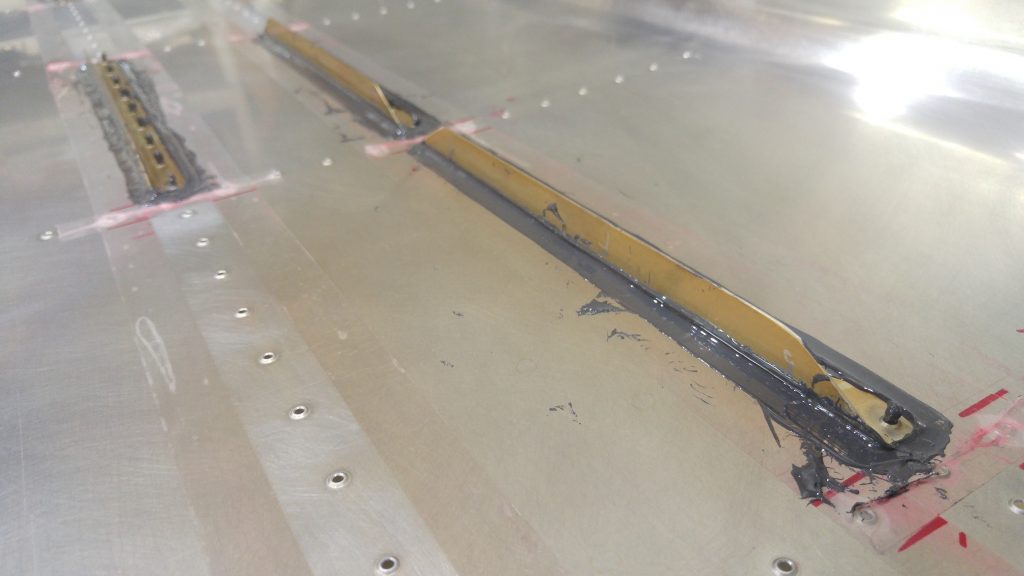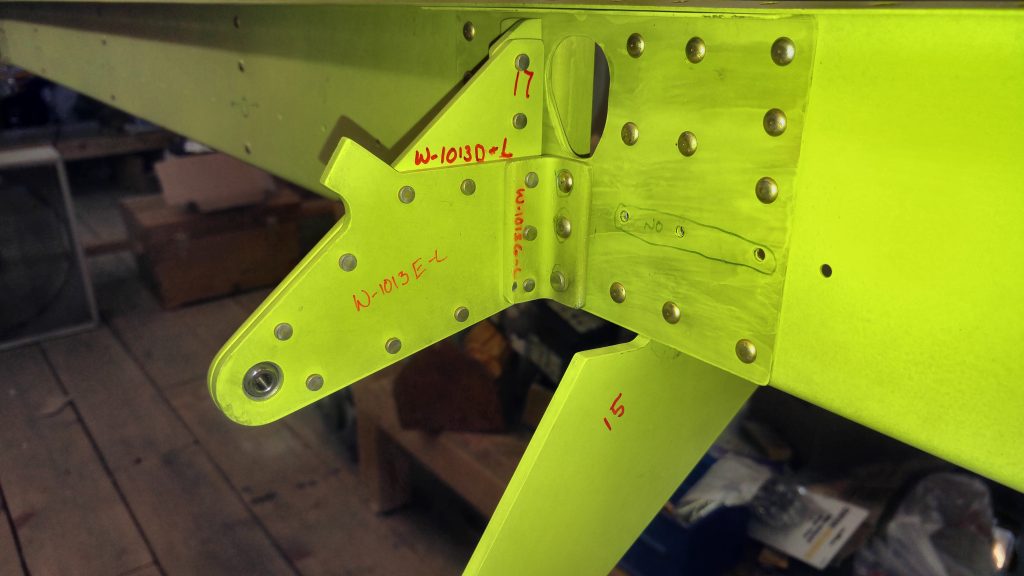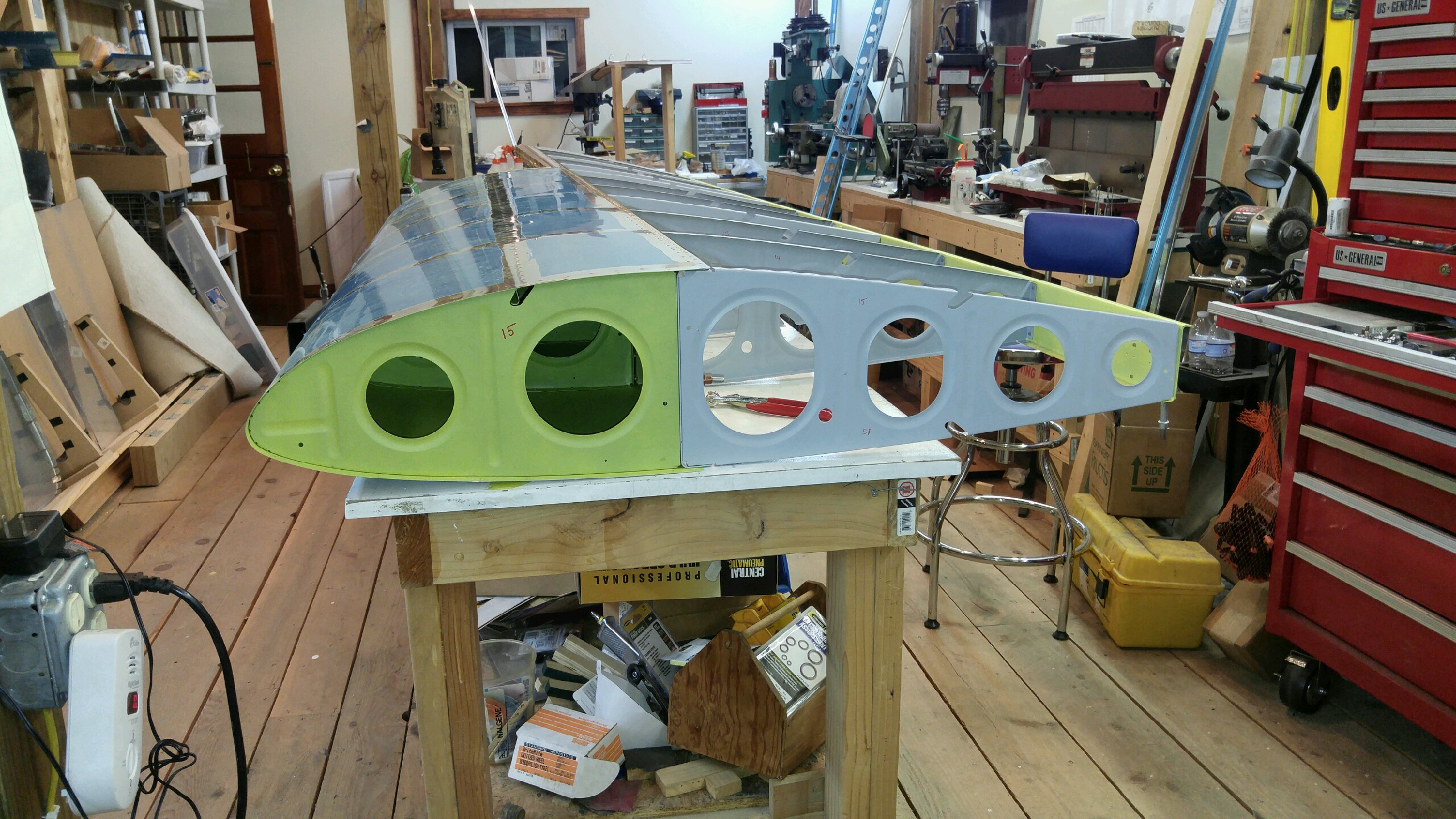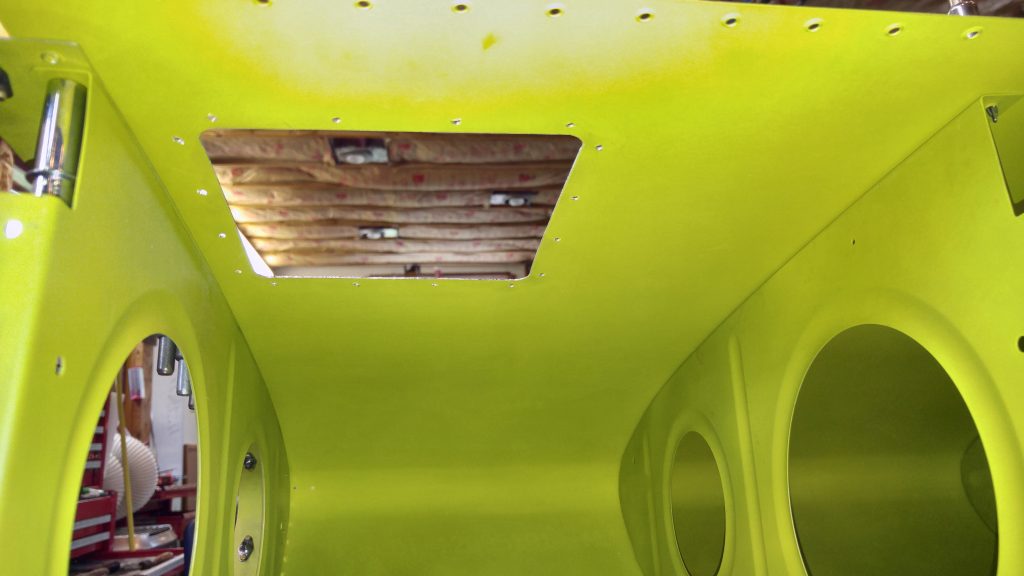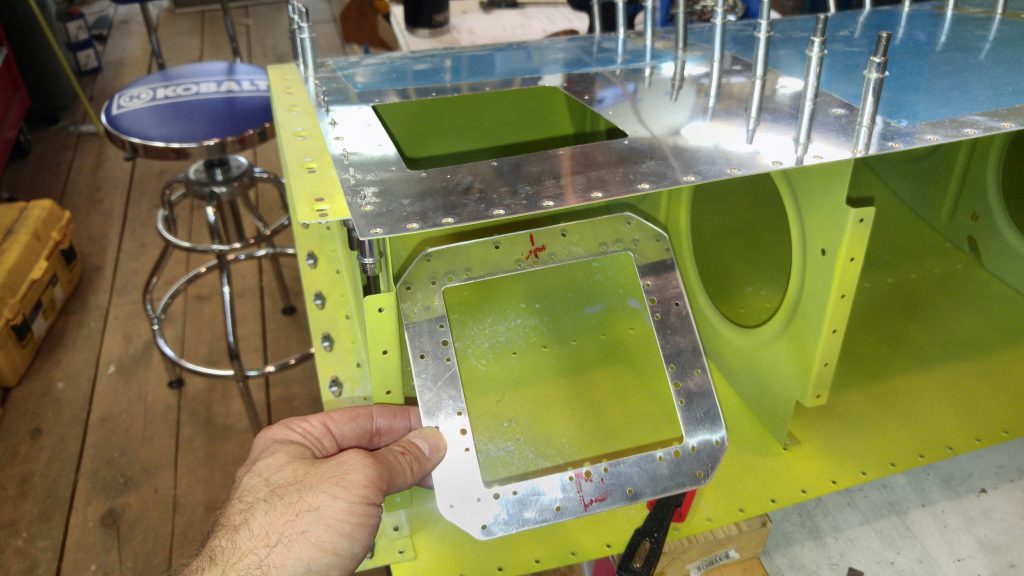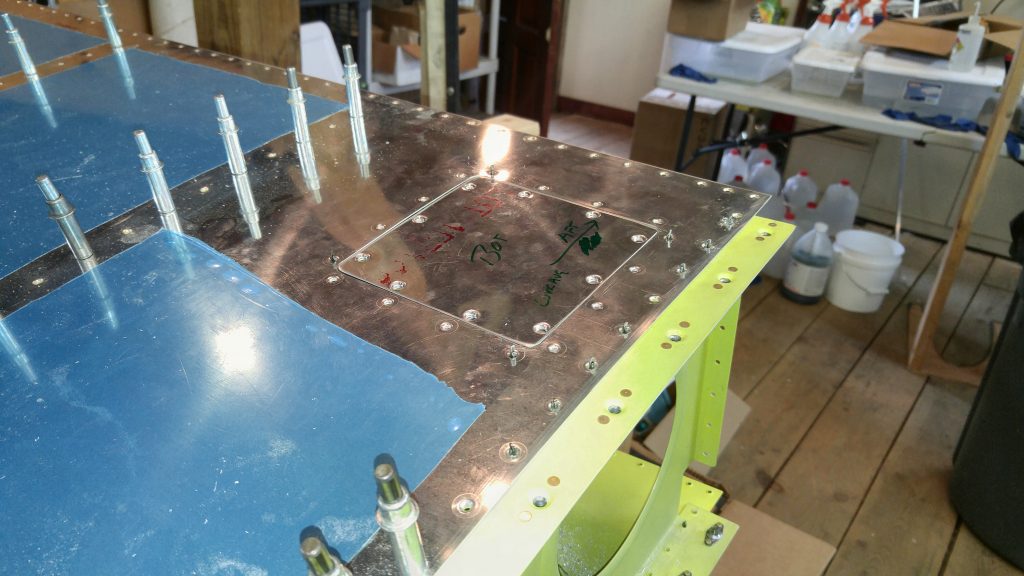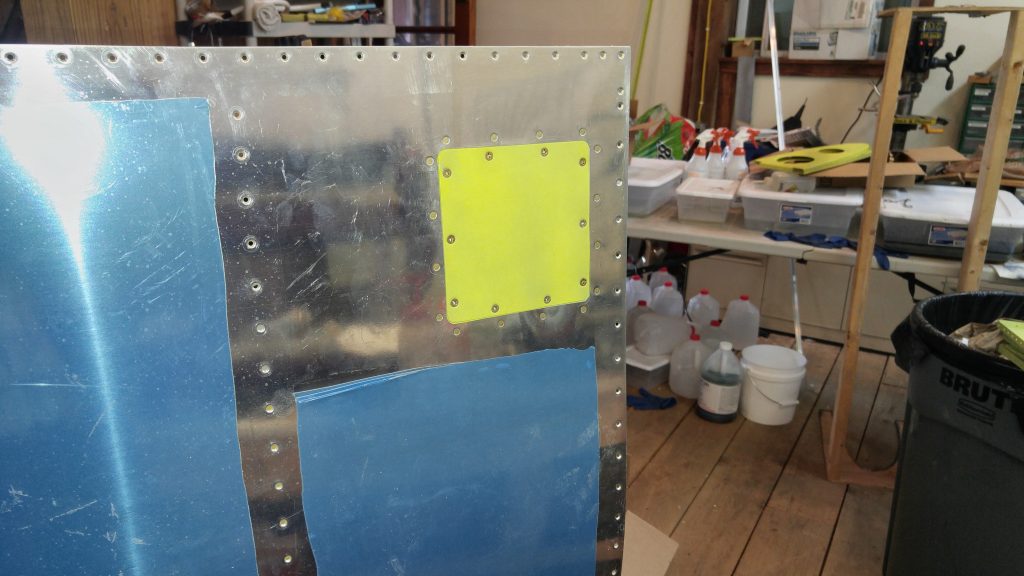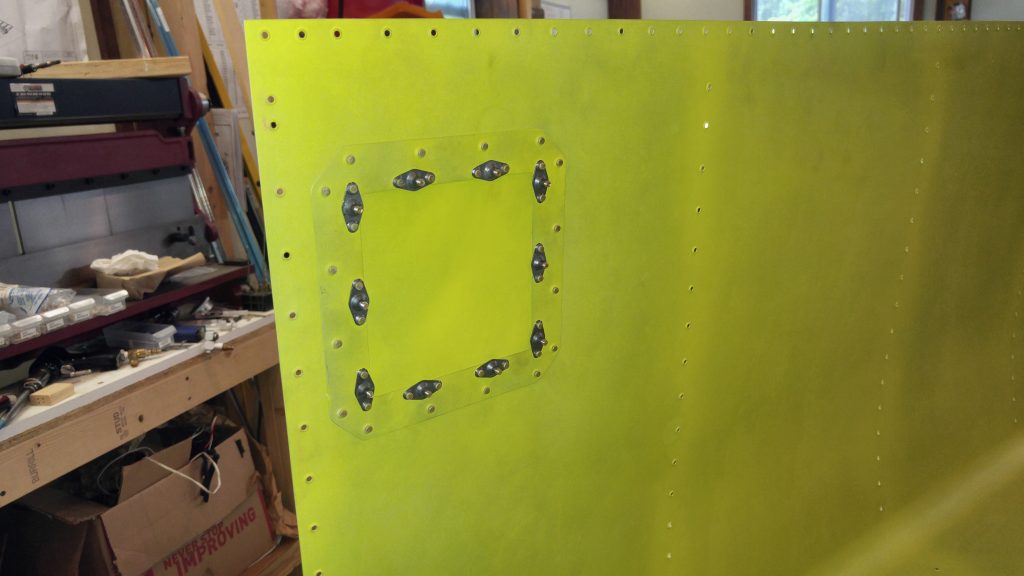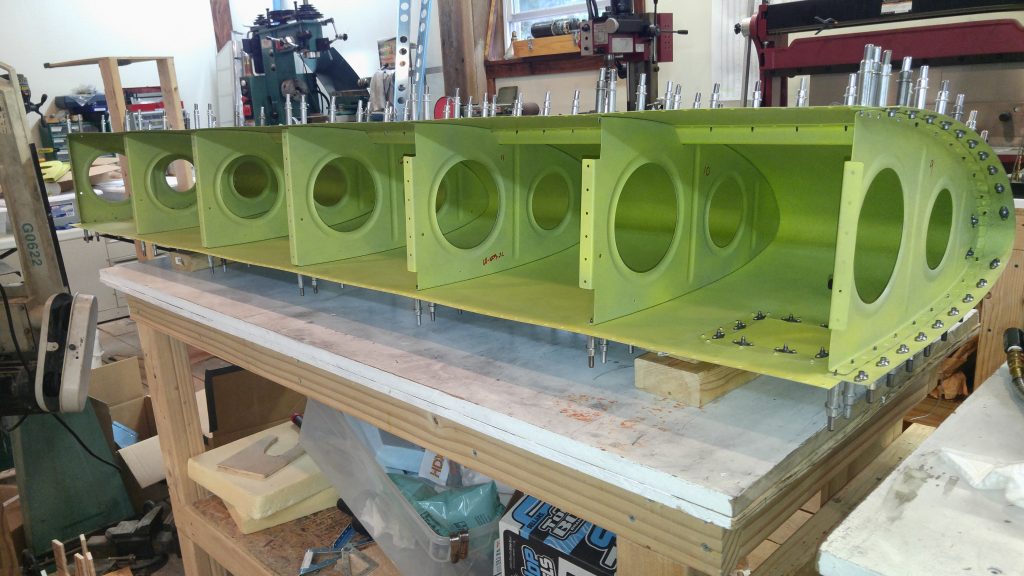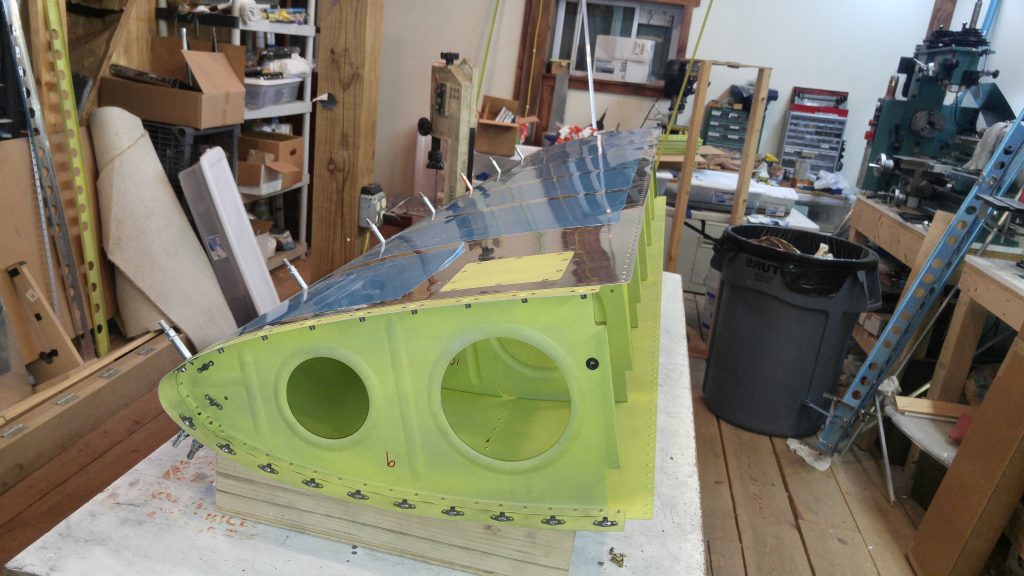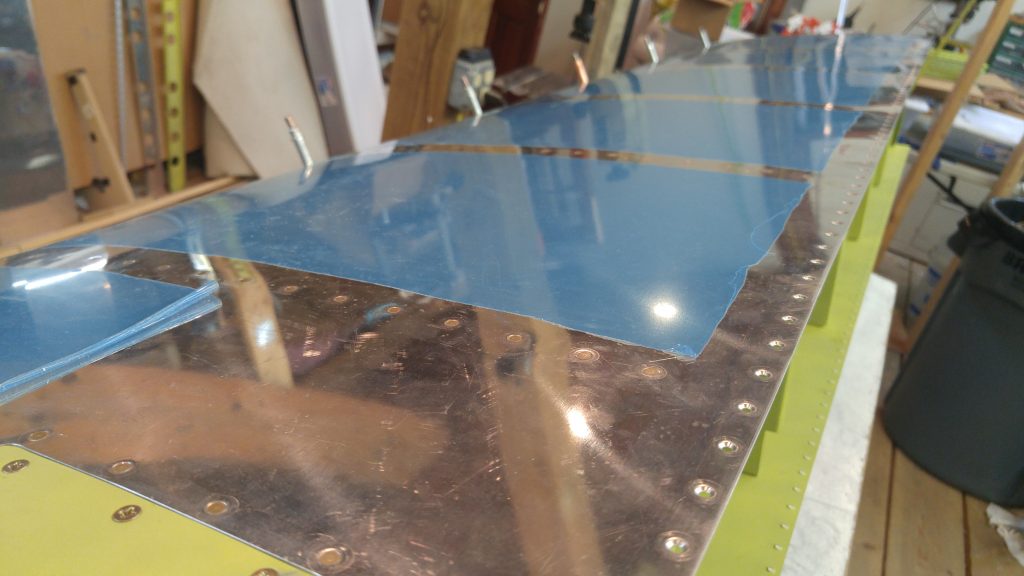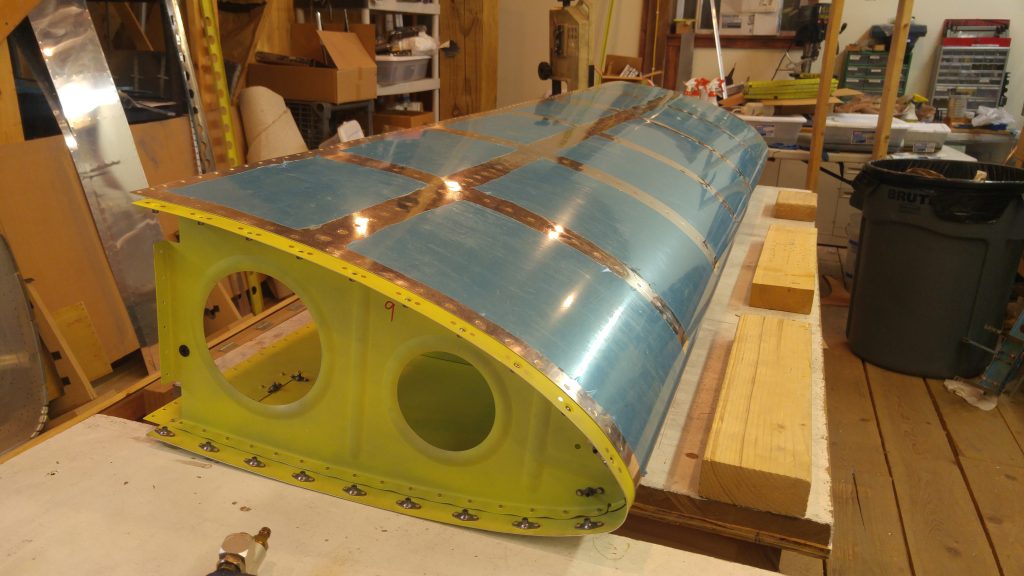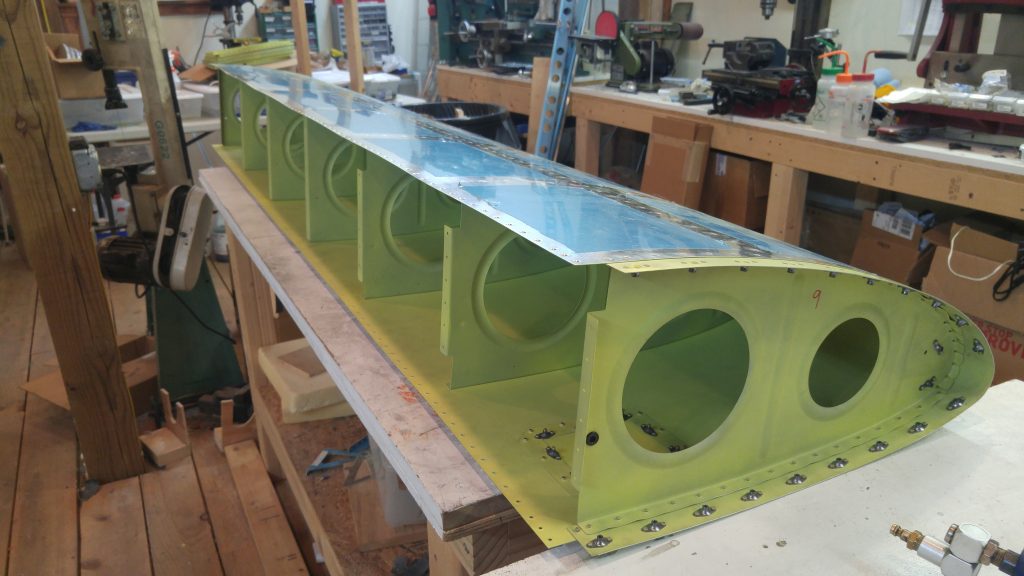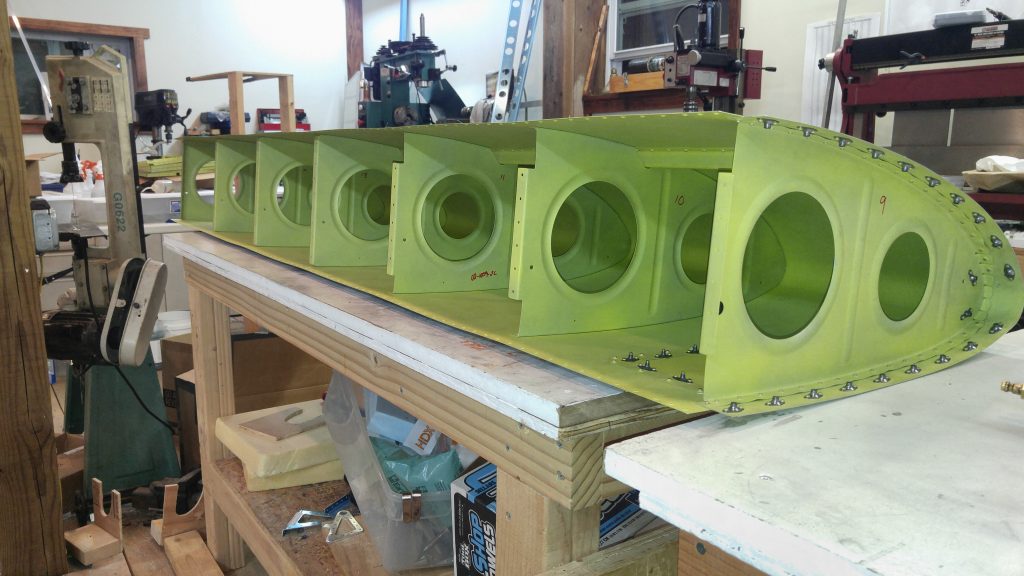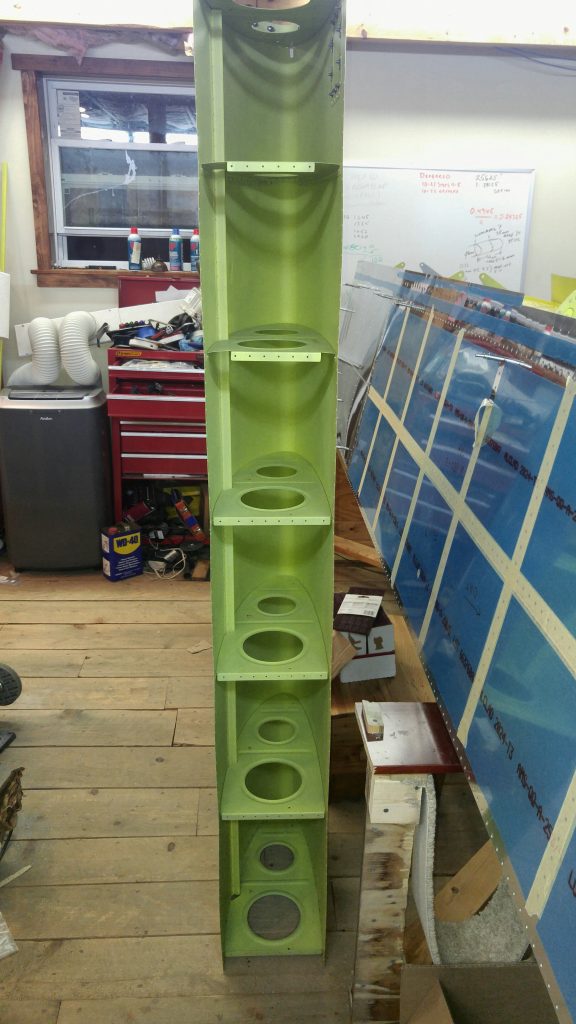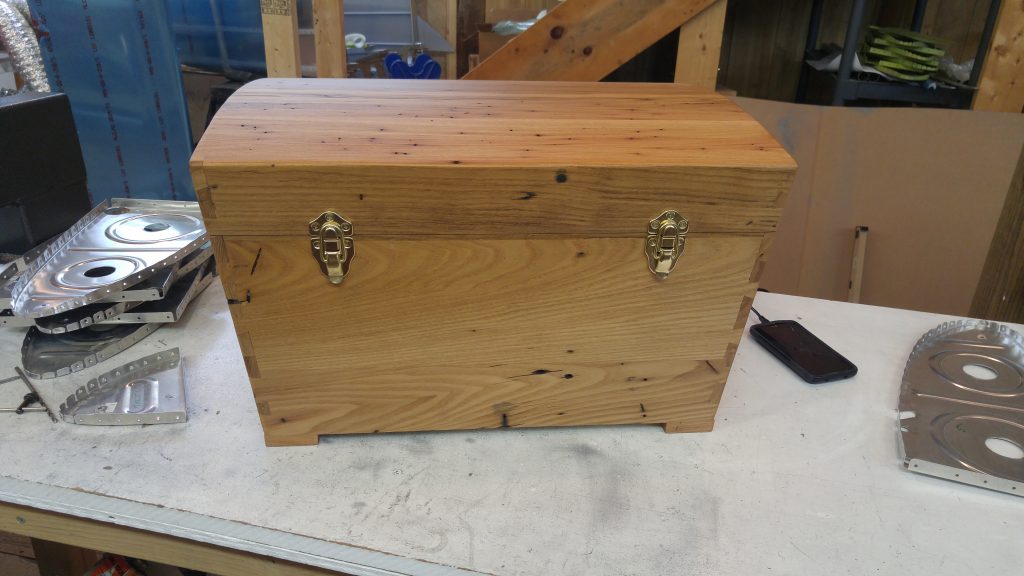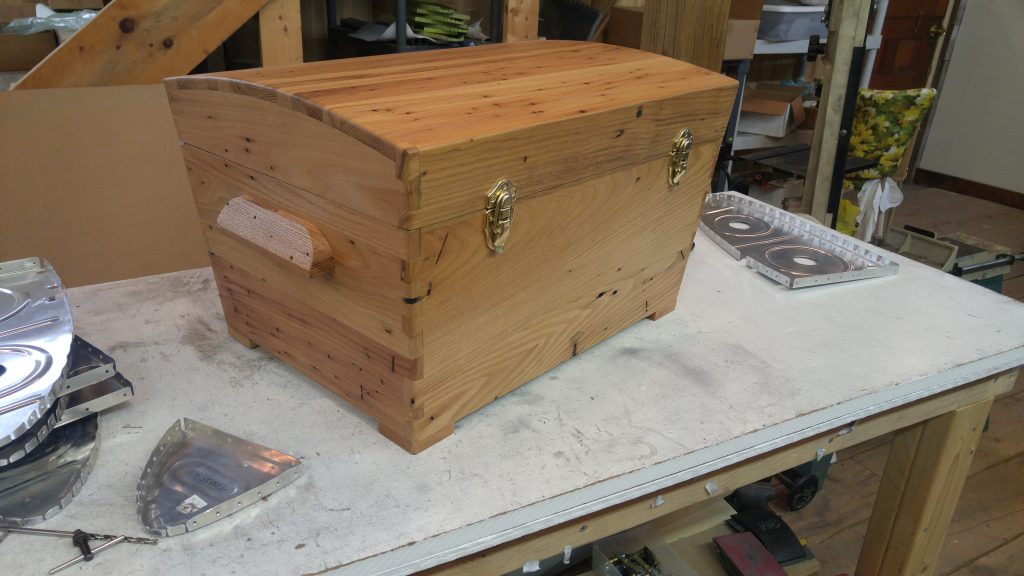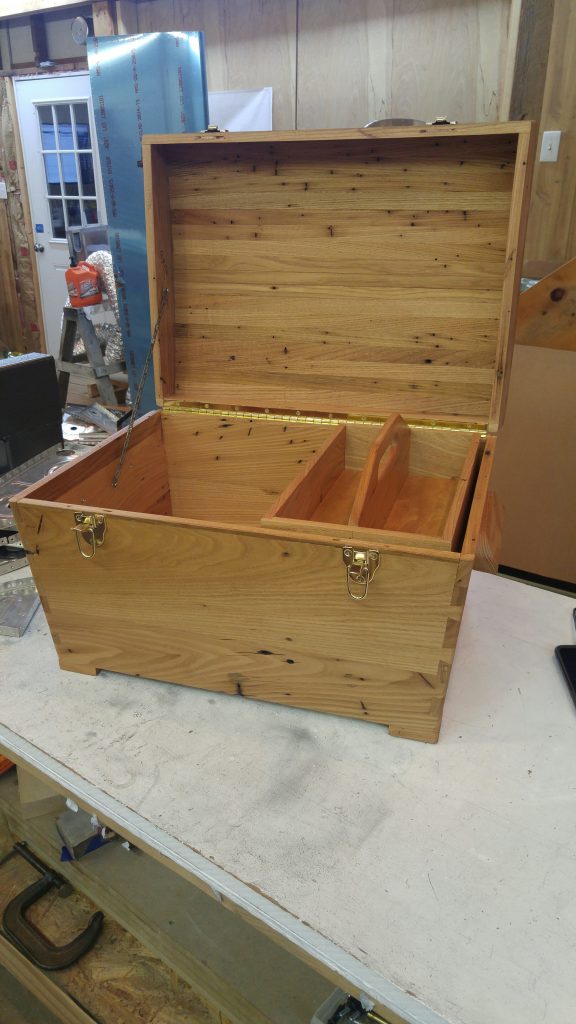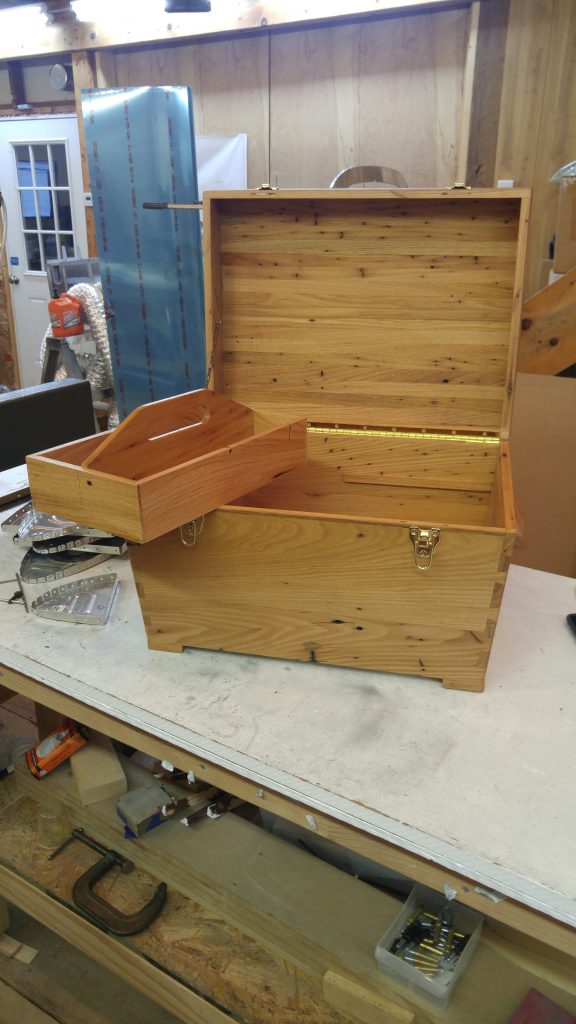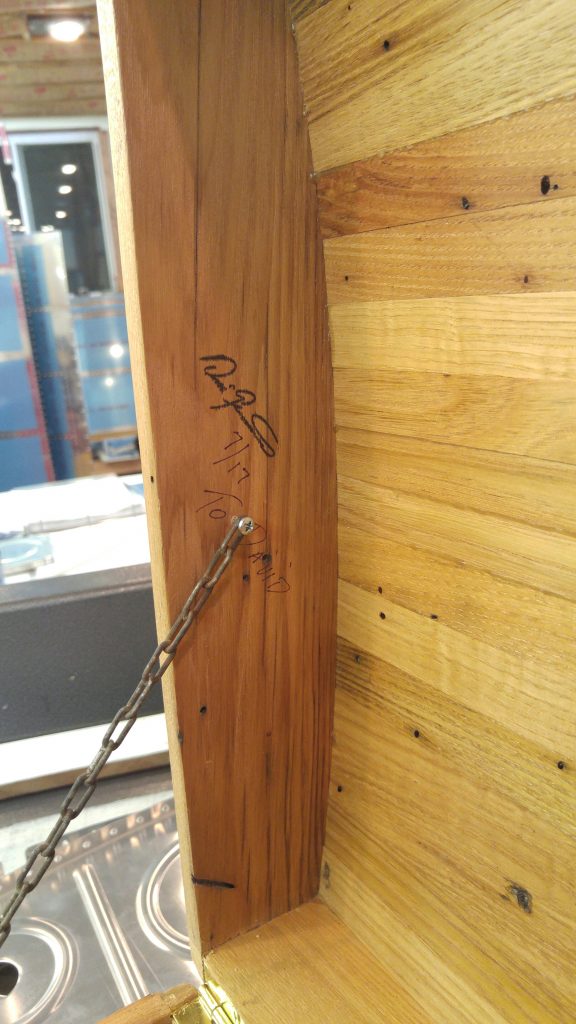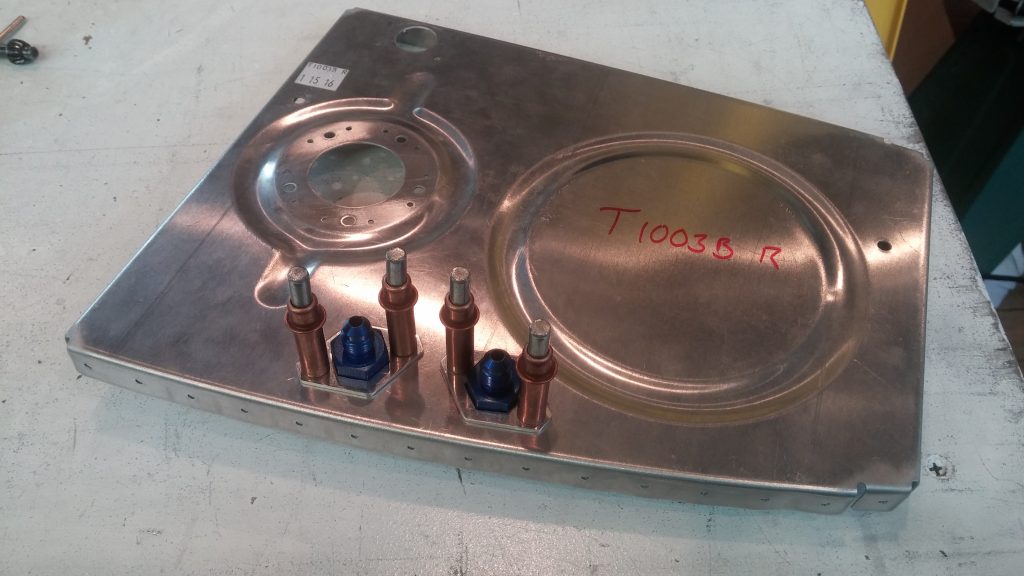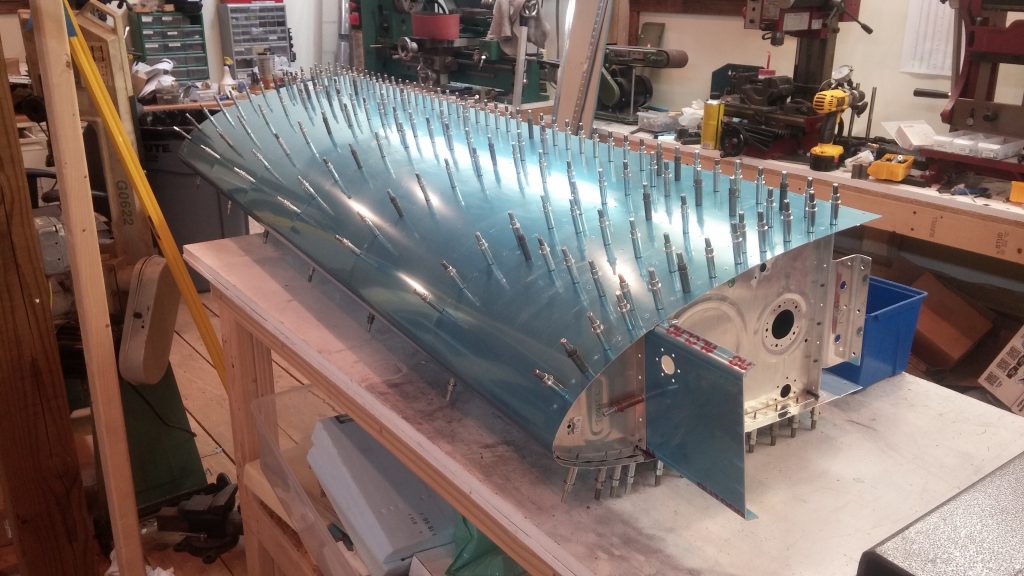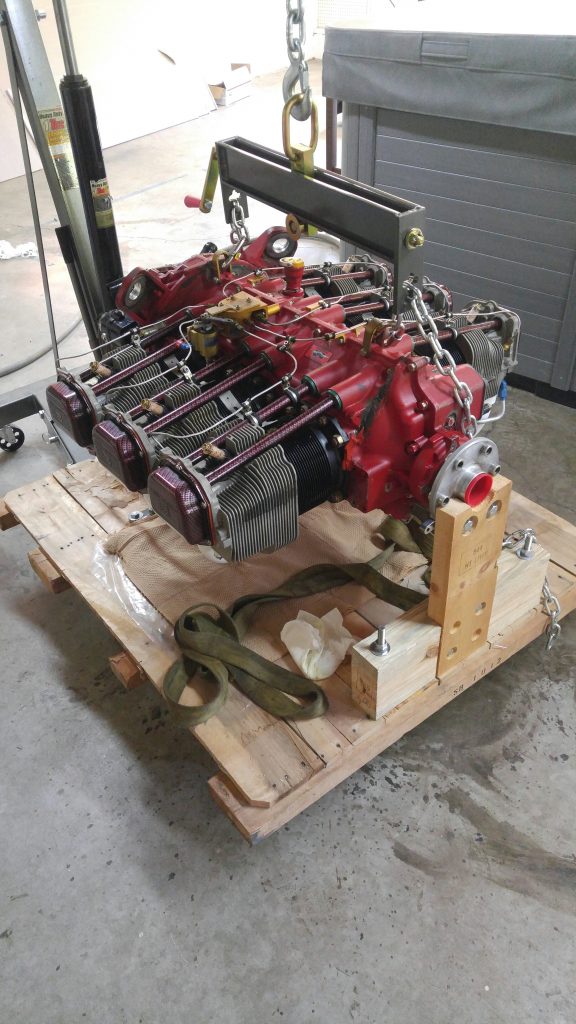I finished the RH fuel tank and measured the amount of sealant I used during the baffle installation. I applied a thin coat of sealant to both sides of all mating surfaces, with the exception of the baffle flanges, which I did mostly per Van’s instructions. For that part I used a 3/16″ bead forward of the rivet line, and a smaller bead just aft of the rivet line to allow some smearing between the mating surfaces.
For this baffle, I mixed batches of sealant ahead of time and froze them (for about an hour before actual use). I mixed four small batches, of 77g, 77g, 110g, and 121g, for a total of 385g. At the end, I had 89g remaining (a lot of waste), including 10g that was held up in the nozzles (2 used, 5g each) of the Semco pneumatic applicator gun. This results in a total of 296g applied to the tank and lost to clecoes, cleaning, etc. This matches fairly closely what I think I used for the LH tank baffle sealing.
